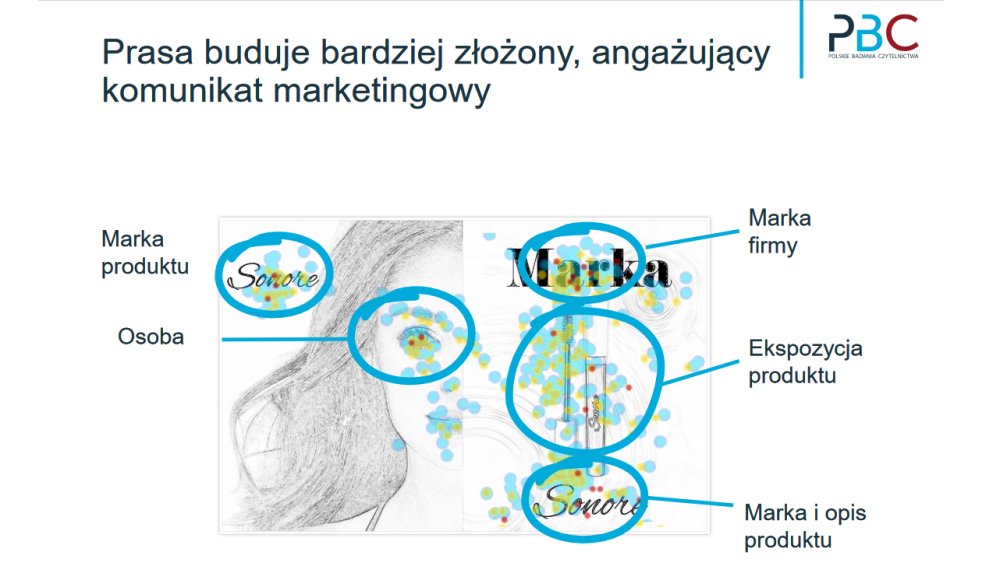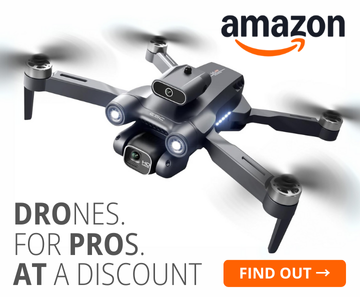 source: PBC
source: PBCThe study, conducted by GFK and Kantar Millward Brown, used eye-tracking technology on 300 respondents, both regular print readers and non-readers. It analyzed ad reception in:
- daily newspapers
- and luxury women’s magazines.
The study focused on so-called long fixations, or gazes at an ad lasting more than 180 milliseconds. It also measured emotional engagement, indicated by pupil dilation.
- The number of fixations (over 180 ms) on contextual print ads is 67% higher,
- the average gaze duration on contextual ads is 30% longer than on standard ads,
- emotional engagement with contextual ads is 44% higher.
The results also showed that regular readers engage more with ad content than non-readers. However, the study’s main conclusion is the same for both groups: contextual advertising in print media is more effective, and print itself conveys a more complex marketing message.
The study also compared print advertising results with those of online ads. Both print readers and non-readers were more receptive to print ads.
Number of Fixations on Ads
- 4.1 - print ad (readers)
- 3.7 - print ad (non-readers)
- 2.9 - online ad (readers)
- 2.8 - online ad (non-readers)
- The difference of one fixation is a significant difference - emphasizes Waldemar Izdebski, president of Polskie Badania Czytelnictwa, commenting on the study results on the PBC website. - Print advertising allows readers to notice one more element of the ad.
More details about the study results are available on the Polskie Badania Czytelnictwa website.
COMMERCIAL BREAK
New articles in section Marketing and PR
Dance in the media mirror. Between culture, business and viral fame
KFi
Over 78,000 media pieces, 1.6 billion potential views, and 197,500 social media mentions-dance in Poland is no longer niche. With a combined media value exceeding PLN 800 million, it now outperforms MMA, handball, and hockey.
PR in Poland. Ranking of the largest public relations agencies 2025
KFi
The smallest teams often generate the most publications, and agencies outside Warsaw are increasingly capturing media attention. This unexpected distribution of power is one of the key findings from the 2025 PR Agency Ranking in Poland, developed by Widoczni and IMM.
Connected TV and borderless advertising. The ID5 report
KFi
Viewers are moving away from cable TV. And they are doing it en masse. Already 86% of Europeans watch content via Connected TV and global ad spend in this segment is set to double by 2028. The industry is undergoing a communication revolution.
See articles on a similar topic:
Rising Google Ads click costs. How to keep campaigns profitable?
Patrycja Kranc
In 2024 the average cost per click (CPC) rose in 86% of industries. In e-commerce and real estate, increases reached dozens of percent. Optimisation is becoming crucial, not only for campaigns but for the entire customer acquisition process.
Dietary Supplements. How to Distinguish Information from Marketing
Ewa Zygadło-Kozaczuk
Where can you find reliable information about dietary supplements, and how can you distinguish factual information from advertising? The answer is not straightforward. In fact, additional doubts arise.
Online advertising 2024/2025 report by IAB Poland
KFi
Online ads now consume 57% of all budgets. Companies spent 1.62 billion PLN on video formats alone. After leaner years, the numbers are rising sharply. Digital advertising grew by 20% in a year. Traditional formats are slowly fading.
Cold Mailing: What is the Optimal Word Count for Best Results?
Krzysztof Fiedorek
Forget about popular guidelines for marketers that can be found on Google. An analyst from Hunter.io conducted a study of a massive database of 34 million emails requesting contact. It turns out that the world of marketing cold mailing looks quite different today.






























